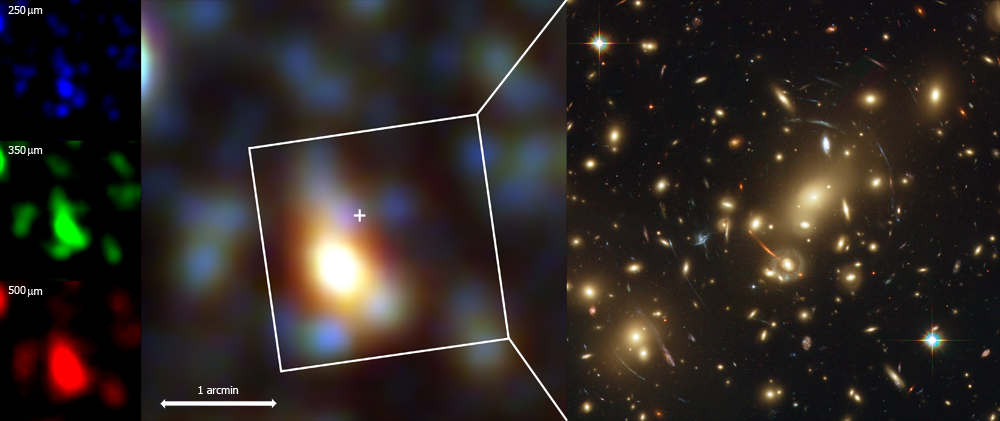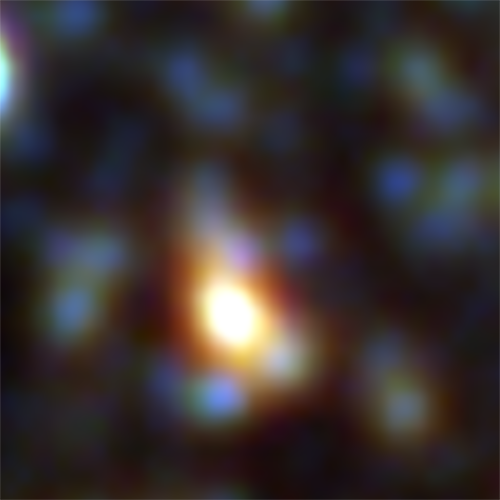| Basic Information | |
| What is this? | A massive cluster of galaxies whose immense gravity is focussing light from much more distant galaxies |
| Where is it in the sky? | In the constellation of Draco the Dragon |
| How big is it? | The cluster contains thousands of galaxies |
| How far away is it? | The cluster is about 2 billion light years away, while the distant galaxy is much further away, seen as it was over 11 billion years ago |
| What do the colours represent? | The blue objects are in the intervening cluster, while the more yellow blobs are the distant galaxies |
Downloads
See this object in:
The region of sky around the massive galaxy cluster Abell 2218, as seen by Herschel. Abell 2218 is a massive galaxy cluster around 2 billion light years away, and contains thousands of galaxies. Its immense gravity bends and focusses the light from more distant objects, in a manner similar to light being refracted through a normal glass lens. This effect, called “gravitational lensing”, was predicted by Einstein and Abell 2218 is famours for being one of the best examples. Most of the objects in the image are blue, and in the cluster itself. The yellow blob just below the centre is a much more distant galaxy. The gravitational lensing allows it to be seen much more clearly than would otherwise be possible, and as it appeared over 11 billion years ago – less than 3 billion years after the Big Bang.
The properties of the cluster are also of great interest to other astronomers, such as those using the Hubble Space Telescope. Observing at many wavelengths not only helps work out the precise effect of the lensing, but also shows the nature and behaviour of galaxies within large clusters. Dr. Michael Zemcov of California Institute of Technology says “Images like this show that SPIRE has opened up the possibility of observing at sub-mm wavelengths in a way which was just not possible before; this kind of clarity is unprecedented at these wavelengths. Now that these data are available to the entire astronomical community, we will really be able to test our understanding of objects like galaxy clusters and, more profoundly, the formation of structure in the Universe from soon after the Big Bang right up to the present day.”

The image above shows the Herschel image (centre) in relation to an iconic image of Abell 2218 from the Hubble Space Telescope (right). The three images on the left show the three Herschel wavelengths independently. The centre of the cluster is marked as a white cross-hair, and the bright yellow object just below is the lensed galaxy.

